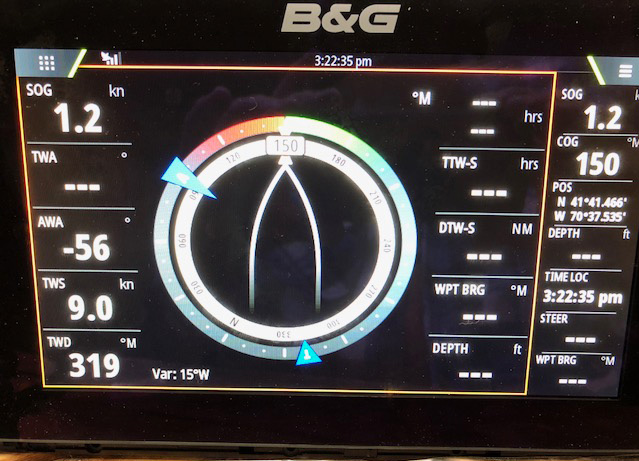Photos/Video – SailTimer Wind Instrument™
Click photos to open full-size, or see YouTube videos below. (Credits for user-submitted photos are in newsletters.)
Attention to detail. Craftsmanship. Precision fit. Built to last.
Miniature ceramic ball bearings that can never corrode, and move the wind cups and wind direction arrow in even the lightest breeze. The battery is the counter-balance in the nose cone. An engineering achievement that is waterproof, has moving parts, works outside year-round in hot UV rays and cold temperatures, and generates its own renewable energy.
● Emerging technology: Crowdsourced wind maps and S-100 marine charts.
● Transmitting from the Wind Instrument through the air to the Air Link 4, which connects on NMEA 2000 wires to a GPS chartplotter and/or autopilot (2-minute video). The Air Link is too small to have a display screen, but can be configured with the Air Link app on Android and iOS.
● Under sail with the Wind Instrument RB™. A short clip showing what it looks like from below (11 seconds).
● Overview of features in the new SailTimer Wind Instrument RB™ (with Replaceable Battery). It follows the same principles as previous models, but this is a remarkable new physical design with the battery used as a counterbalance in the nose cone. The video also provides an illustration of the Wind Instrument RB transmitting on Bluetooth to the free SailTimer app, which is updating the optimal tacks automatically as the wind changes. The new Wind Instrument RB also works great with Audio Navigation in our apps on Android and iOS.
● Audio Navigation: Originally in the SailTimer Wind Gauge app on Android, and now in the SailTimer chartplotter app on iOS too. You can put the phone/tablet away safe and dry and use Audio Navigation with a Bluetooth speaker or earbud. That reduces power consumption in your smartphone/tablet, reduces heat with the screen off, and keeps your hands and eyes free for sailing.
● Sailing with the SailTimer Wind Instrument (20-second clip). As shown, it is for sailboats of all sizes, from keelboats to dinghy sailboats. No wires to install down the mast (and no 12-volt battery required).
● Installation high up on the masthead, by Sittbrunnen sailing blog in Sweden (English translation). An existing windex mount was used, not our stainless steel mounting rod. 2016 model is shown in this 32-second video.
● Is it steady in the wind when the boat is bouncing or the mast is swinging around? Yes, this centerboard sailboat is moving around a lot at the dock, and you can see that the Wind Instrument is dead-steady for the wind direction, in spite of the mast swinging around (4-second clip). The wind shifts a bit at the end of this 23-second clip, but you can see that the Wind Instrument is unaffected by the mast swinging around.
● Incredibly thin tail electronics on the new design used since 2016: closeup and trailing edge (52 sec), side and front view (32 sec), and view of both sides in a very light 1-2 knot puff of wind (19 sec.).
● Wind cups turning in the lightest breeze: The design of these wind cups is the result of extensive testing. They are small and light, and work equally well when sailing along heeled over. These blades have no arms, which is also an unusual design, allowing them to spin at higher velocity. In this video clip (21 sec), you can see the wind cups turning and the wind direction arrow moving with just 1-2 knots of wind.
● Using the 2015 Wind Instrument in the off-season to make wind graphs of winter storms (1:11).
● Designing a better anemometer for sailboats (2:14).
● YouTube demo of design features & innovations in the second-generation 2015 model (2:40).
● User video from San Francisco Bay, USA showing side-by-side views of Wind Instrument and wind direction/speed in SailTimer app (13 sec).
● Is it balanced? Yes. The tail looks heavier than the nose cone, but it’s not: see for yourself (47 sec.).












